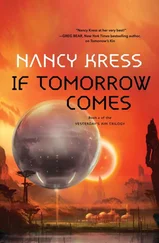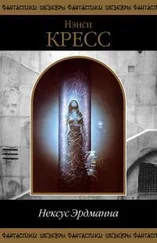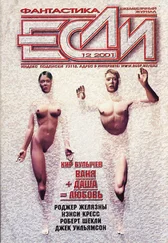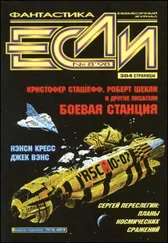“I’m fine.”
“Three solid hours. I timed it.”
“I’m fine .”
“No. You aren’t. Come eat something with me. You didn’t have any lunch.”
Marianne clenched her jaw and kept on reading.
The ecological disruptions around the world were slowly righting themselves. Every once in a while, someone would report sightings of live mice living in the wild. None of these sightings were substantiated. Most of the time, when Marianne tracked down the reporters, they also believed in elves or Martians or demons inhabiting their basement.
Of Harrison’s research on spore-resistant mice, she found nothing at all. It was secret, or incomplete, or had led nowhere. Like her and Harrison.
“It’s a good thing,” Sissy grumbled, “that we’re going to New Mexico next week for that big speech. At least it’ll get you out of that chair.”
Marianne went on reading, leaning in closer to the computer screen. Trying to fill up as much of the world as possible with its digital light.
S plus 4 years
Who could live in this heat?
“You’ll like Albuquerque,” Marianne had told Sissy. Sissy could tell it was a brave try at being cheerful, which Marianne definitely wasn’t. “The desert is gorgeous, in an austere sort of way. And our hotel is right on the Rio Grande.”
Well, Marianne was wrong. Sissy didn’t like Albuquerque, not from the second she and Tim and Marianne stepped off the jetway into an airport where the AC was broken. At eleven in the morning it was ninety-one degrees outside, even hotter inside. And never mind all that shit about it being dry heat—ninety-one degrees was ninety-one degrees, and all three of them were sweating like stinky waterfalls by the time they reached the hotel.
Which did have working AC. It was cranked up so high that the sweat dried instantly and Sissy rooted in her bag for a sweater. Fortunately, she’d brought the heavy purple one with the pink sequins. The Rio Grande, visible from their sixth-floor hotel suite, didn’t look like much of a river, even if Marianne did say that it was classified as “exotic” because it was a river that flowed through a desert. Sissy had seen creeks with more water in them. Also, the Rio Grande looked just as hot as everything else outdoors. Not that Sissy planned on going outdoors. Marianne’s speech would be in the grand ballroom right in this hotel, which also had two restaurants and a dance club on the top floor. Sissy had brought her dance clothes. She wasn’t setting foot outside.
But their suite was nice, two small bedrooms and a big central room with sofas, a bar, dining table, big wall screen. Sissy and Tim’s room had a balcony outside French doors. She slung their suitcase on the bed and started to unpack.
Tim, who’d been prowling around the suite, checking locks and window ledges, strode into the room and said, “Come on, Sis. We got that desert trip this afternoon.”
Sissy eyed him. Tim looked so hot—the good kind of hot!—in jeans and tight tee and a cowboy hat he’d bought first thing. Weather never bothered him, the bastard. “I’m not going on a desert trip.”
“Sure you are. It’ll be fun. Some professor is taking Marianne to see the—that thing. The ecoregion.”
“She can see it. You can see it. I’m staying right here.”
Tim put his arms around her. Even in the chilly room, his body radiated its own special heat. He crooned in her ear, “You my baby, I need my baby, my one and only baby….”
“You’re out of tune,” Sissy said severely, “and I told you that I’m not a ‘baby.’” But she knew she would go with him. When Tim was like this, there was no resisting him.
“That’s my old woman,” Tim said, and she swatted him, not gently. He laughed.
* * *
The car had AC, but they didn’t stay in it. Marianne didn’t, Tim didn’t, Dr. Lopez didn’t, and so that meant Sissy couldn’t either. If Tim’s job was to protect Marianne—not that there was anything in this empty country to protect her from!—then Sissy’s was to see that Marianne didn’t tire herself out, especially not too far from the car. It’d been four months since Marianne and Harrison broke up and Marianne still wasn’t eating much. She’d lost thirty pounds. Not that it didn’t look good on her, but her face was drawn and tired and she just never knew when she should rest. Some people had no common sense.
So Sissy clambered out of the car into the fucking awful heat, careful not to touch the hot metal of the car, blinking in the burning sunlight. The hats that Dr. Lopez gave them didn’t block enough of the glare. They left the car beside the road, which had almost no other vehicles on it, and started to walk.
Marianne said to Dr. Lopez, “I see why you love this landscape.”
Sissy blinked. Love this ? The uneven ground, baked hard and dry, was dotted with dusty, spiky, unfriendly looking bushes, and not much else. Way off in the distance some hazy mountains spread across the horizon. The sky was a hard, unforgiving blue from which heat pressed down like stones.
Dr. Lopez said, “You see its austere beauty, don’t you? Not everybody can.”
I can’t, Sissy thought. Were there spores lying here, invisible, on the hard ground? Of course there were. Marianne said that heat didn’t kill them. Nothing did except radiation, and you couldn’t radiate a whole planet. In Russia, where there wasn’t so much genetic immunity for reasons Sissy didn’t understand, almost half the babies got spore disease and died horrible deaths.
Marianne said, “Tell us about the ecoregion. As it was before the spore cloud, and as it is now.”
Dr. Lopez nodded. Both graying and balding, he wasn’t handsome—especially not next to Tim, who squatted nearby, poking at rocks with a stick—but he had a gentle face that Sissy immediately liked. His voice was soft and musical, even when he sounded like he was talking to a college class. “This area lies on the northern edge of the Chihuahuan Desert ecoregion, which comprises 15.2 million acres in New Mexico and is one of the three most biologically rich and diverse desert ecoregions in the world. It has approximately thirty-five hundred plant species.”
Where?
“Unfortunately, the ecoregion also contains the largest assemblage of endangered cacti in America. The dominant flora is this.” He waved at one of the ugly, dusty bushes. “Creosote— Larrea tridentata . The other two common flora are acacia and tarbush. The soil is mostly a mix of clay and caliche, overlain by a layer of decomposed granite, which results from long-term outwash from the mountains. Our fauna include a high level of local endemism of butterflies, spiders, ants, lizards, snakes, and scorpions.”
Scorpions? Snakes? This just got worse and worse.
“Hey, I think I disturbed one of your little critters,” Tim said. He straightened, still holding his stick. Sissy shrieked. Across the ground at his feet scuttled a two-inch-long yellow monster with dark stripes, a long tail, and ugly claws.
Dr. Lopez said quickly, “Don’t try to pick that up, Mr. Saunders. Let it go. That’s Centruroides suffuses and its sting is highly poisonous. We call it, with great respect, ‘alacran de Durango.’”
Tim said, “It leaves me alone, I leave it alone.”
Marianne said, “What does it eat?”
Dr. Lopez said, “Spiders, solfugids, other scorpions, an array of insect prey. You want to know if it’s been affected by the mouse crisis. Only indirectly, in that the whole ecosystem is shifting. Before the spore cloud, we were having great success in bringing back the aplomado falcon, which was once wiped out here. But the falcons—beautiful birds, just beautiful—eat mostly small birds, but those need grasslands for breeding and Chihuahuan grasslands have been profoundly affected by the lack of mice. The grasslands had been prioritized for conservation by the World Wildlife Fund, but with the absence of mice have come shifts in seed distribution, die-offs of some larger mammals, upheavals in insect and bird population rations, invasive species…” He spread his hands, palms up, the gesture of helplessness.
Читать дальше












